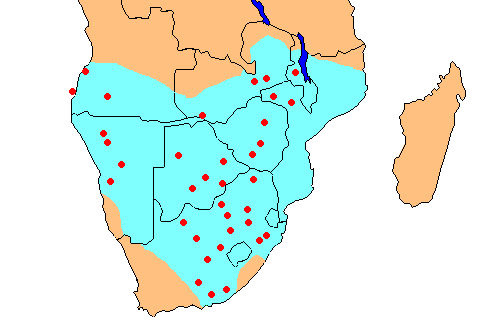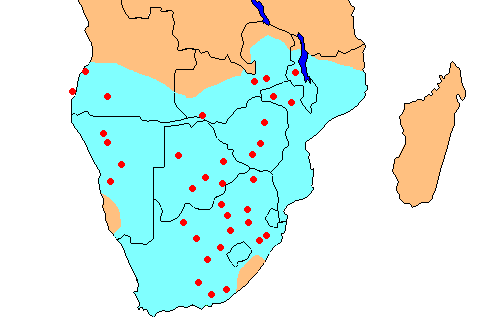 WeaveResearch Unit
WeaveResearch Unit
 WeaveResearch Unit
WeaveResearch Unit |
Weavers of the World |
| Home | Site map | Weavers of the World | Weaver Watch | Weaver Research Unit |
Introduction
This project aims to review the history of weavers, particularly documenting their distribution, temporal range changes, and demographic factors involved in these range changes.
Most weavers were described during the 19th century, although some were described by Linnaeus in 1758, and some in the 20th century. For analysis two broad categories are of interest:
1. before 1900, mainly based on specimens and published records from the 19th century and earlier
2. 1900 onwards, based on many different databases, particularly specimens, published records, nest record cards, and ringing records.
Range changes in birds can be due to land-use changes which may be induced by man or by climate changes. How quickly different weaver species can adapt to land or habitat changes depends on their adaptability and demographic parameters.
The two important demographic parameters are survival and breeding success.
Example: Range changes in the Southern Masked Weaver Ploceus velatus
The Southern Masked Weaver provides a good example of range expansion. In the first figure below, the light blue shading shows the approximate range in 1900, based largely on published point locality records (red dots) and general published accounts. During the 20th century, this species expanded its range into the Western Cape.


Another example of a more recent range expansion: Red-billed Quelea range expansion in the Western Cape, April-May 2007
The project
Data collection and publication will occur on three following levels:
1. Synonymy - generic and specific synonyms - to find old records, the synonyms of weavers need to be known
2. Taxonomy - phylogenetic analysis for family needs to be done
3. Distribution records - find published records that have dates & localities, assign coordinates
4. Demographic data - based on published research, fill some gaps with on-going new research (i.e. ringing to study survival, and nest checks to study breeding success)
The distribution records include:
1. Type records and early records - this determines from when a species' range can start to be determined
2. Specimen records
3. Point locality records from the literature
4. Other data sources
How you can help
Anyone - enter locality data into excel, from scanned references
Bookworms - read Africana and let me know if there are any or no references to weavers
Linguists - translate French and Portuguese weaver texts
Biologists - send weaver papers, collaborate on demography research, start your own demography studies on weavers
Ringers - target weavers for ringing and recaptures, help ring in Cape Town
Birders - send weaver sightings, especially of weaver colonies (date, place, no. of nests, additional notes)
Bird atlas managers - send the raw atlas records for weavers once your work has been published
Museum curators - send data for weaver specimens, especially types
Send me an email for more information if you want to contribute in one of these ways!
